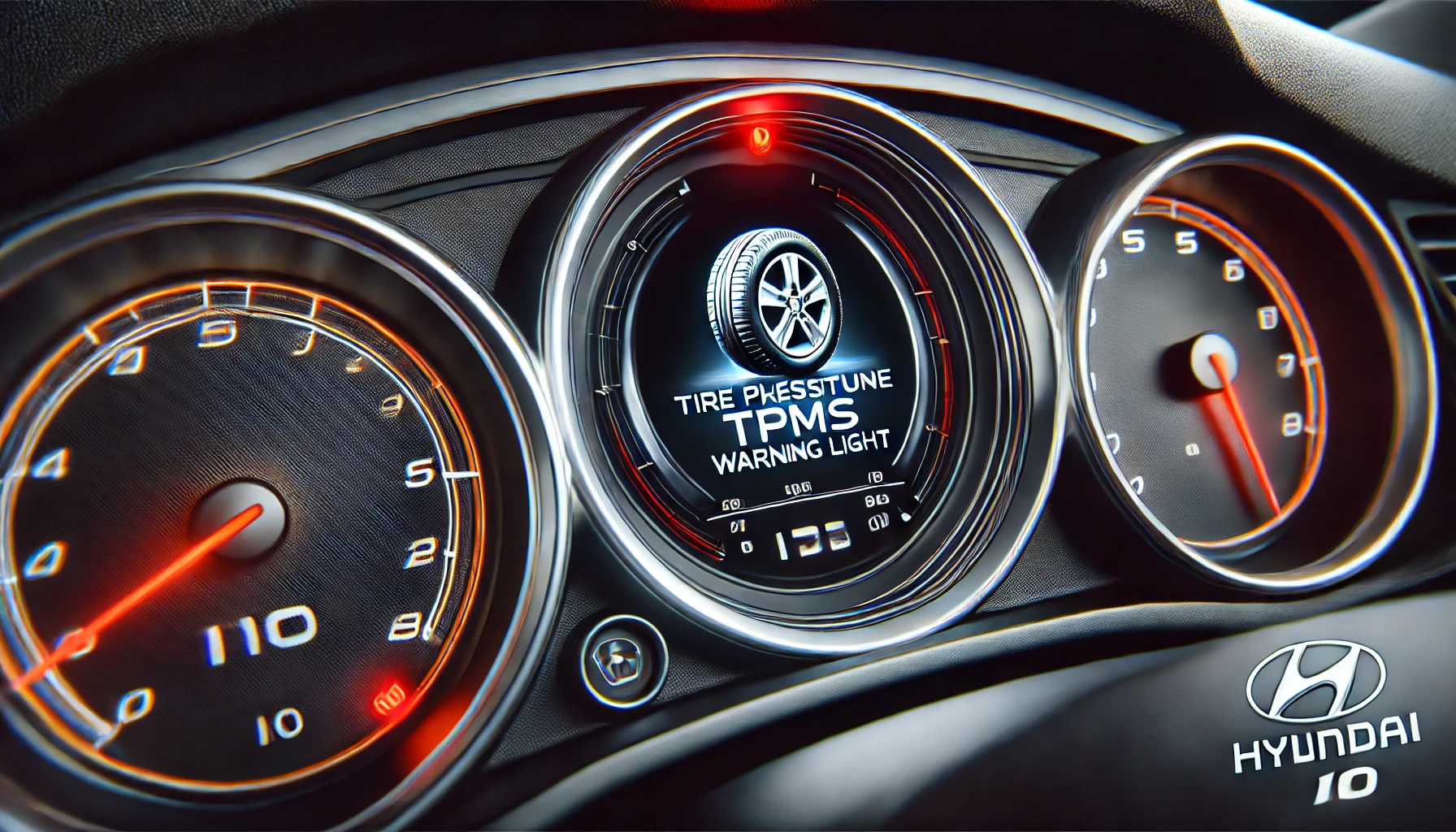
1. Understanding the Tire Pressure Monitoring System (TPMS)
The Hyundai i10 is equipped with a direct TPMS, which relies on sensors installed in each wheel to monitor tire pressure. These sensors send data to the car’s main computer. When a sensor detects low pressure or a fault, it triggers a warning light on the dashboard.
2. Common Causes of Tire Pressure Sensor Faults in Hyundai i10
- Battery Depletion in Sensors
Tire pressure sensors in most vehicles, including the Hyundai i10, come with built-in batteries. Over time, these batteries can drain (typically lasting 5-10 years). When they lose power, the sensors will stop sending signals, causing a fault. - Sensor Damage
Rough roads, off-roading, or even minor impacts can sometimes damage TPMS sensors, especially during tire replacement or maintenance. - Software Glitches
Occasionally, the TPMS may malfunction due to software issues in the vehicle’s electronic control module (ECM). - Faulty or Worn-Out Valves
The valves that house the TPMS sensors can wear out or leak, especially in older vehicles.
3. Steps to Troubleshoot and Resolve TPMS Fault in Hyundai i10
Step 1: Inspect Tire Pressure
Make sure all tires are inflated to the recommended PSI (check the door frame or owner’s manual for the exact number). Sometimes, correcting pressure discrepancies can reset the TPMS light automatically.
Step 2: Reset the TPMS
- Drive at 15-20 mph for about 10-15 minutes: This allows the sensors to recalibrate.
- Manual Reset:
- Turn the ignition to the “On” position without starting the engine.
- Locate the TPMS reset button (usually beneath the steering wheel).
- Hold the button until the TPMS light blinks three times, then release it.
- Start the car and let it run for 20 minutes to allow the system to refresh.
Step 3: Use an OBD2 Scanner
An OBD2 scanner can retrieve error codes from the TPMS system to help pinpoint which sensor (if any) has malfunctioned. If you’re unfamiliar with using an OBD2 scanner, most mechanics can diagnose this quickly.
Step 4: Inspect Sensors for Physical Damage
If possible, inspect each TPMS sensor for visible signs of wear or damage.
4. When to Replace TPMS Sensors on Hyundai i10
If your i10 has high mileage (above 100,000 miles) or is over five years old, it’s likely the sensors may be nearing the end of their lifespan. Replacing sensors, though more expensive, can resolve persistent faults.
5. Professional TPMS Reprogramming
After installing new TPMS sensors, they may need to be programmed or “relearned” by the car’s computer system. Hyundai service centers or specialized tire shops have the tools to handle this quickly.
